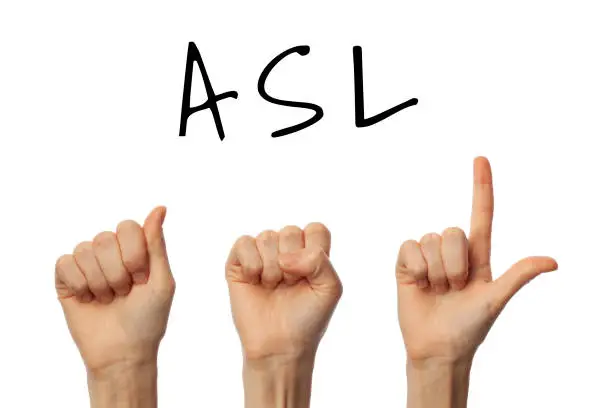ASL is an acronym for American Sign Language.
ASL stories are a form of visual literature.
This is because the stories are signed and not spoken or written down.
ASL stories can be used for both entertainment and education purposes. The use of ASL to tell stories dates back many years ago.
There are several genres of ASL Story.
Like any form of literature, the stories require a depth of creativity.
To keep your audience engaged, you need to have unique stories and present them in an outstanding style.
Continue reading for more about ideas you can use to tell your story.
Table of Contents
- Types of ASL Stories
- Parts of an ASL Story
- Amazing ASL Childhood Story Ideas
- Tips to Note When Telling ASL Stories
- Benefits of ASL Stories
Types of ASL Stories
Number Stories
These stories are highly recommended for toddlers.
As the name implies, you tell this type of story using numbers.
You must follow a chronological number using number handshapes.
Number ASL stories are flexible. You can keep the length long or short, depending on your discretion.
Related: Can Deaf People Scream? (Answered)
ABC Stories
You also tell ASL ABC stories in chronological order.
It involves using ASL alphabets. Each letter of the alphabet is used to represent something.
ABC stories display the skill of the storyteller and help to develop talent in both the signer and the audience.
Classifier Stories
This form involves using graphical representations, usually 3D graphics, to make the story real to the audience.
Folktales

These are classic ASL stories that have been passed across from several generations.
Most ASL folktales don’t have a known source.
Jokes
For ASL, different stories involve the use of humor and puns. ASL jokes are perfect for a comedy hang-out.
Poetry
ASL is used in poetry to express rhythmically composed words.
Parts of an ASL Story
The story has 3 parts.
Introduction
The intro is the basis of the story. The topic is stated during the introduction.
Body
This is the central part of the story.
Conclusion
This is the end of the story. It might include a summary of all that’s been said.
Related: How to Easily Change a Diaper in a Wheelchair (Complete Guide)
Amazing ASL Childhood Story Ideas

To create an intriguing story, you need to put effort and creativity. Of course, you must be well versed in American Sign Language.
Whatever genre of story you have in mind must be clear.
Below are great ideas.
Number ASL stories
Regular activities in the house can form a good base for your story.
Tell stories about:
- Keeping the Home Clean
- Doing the Dishes
- Feeding the Dog
- Getting Ready for School
Remember that number stories must include a sequential order. Keep them brief.
ABC ASL Stories
Include fun topics in your ABC stories. Ideas include:
- The Smart Girl Who Went to School
- Simon and the Goldfish
- The Coloured Pencil
- A Day at the Playground
Don’t be too focused on the alphabet. You should also pay attention to what each alphabet represents.
Your topics should not be limited to these only.
Classifier Stories
A graphical representation is needed for this.
You can include stories that require action. For example:
- The Boy That Was a Superhero
- The Brave Swimmer
Folktales
Many folktales and fairy tales have been passed across over the years. You can add a twist to existing ones like:
- Goldilocks and the Three Bears
- Cinderella
- Pinnochio
- Snow White
- The Seven Dwarfs
- Robinhood
Poetry
It would help if you were expressive when presenting ASL poetry. You can pick topics in your interests.
Some generic ideas will be to write about
- Your favorite weather
- A scent you love
- A significant incident that has impacted you
Related: 4 Surprising Ways Deaf People Wake Up
Tips to Note When Telling ASL Stories
Be creative
Be as creative as possible in your stories. Include your daily interactions to give your story a unique edge.
Be visible
Ensure that the area is adequately lit and your audience can see you. Set up your stage.
No noise
Eliminate any noise source to gain the maximum concentration of your audience.
Be calm
Don’t be in haste. It’s best if you don’t rush while telling your story. Sign at the pace of your audience.
Follow the rules of ASL stories
For Number and ABC ASL stories, you need to follow a chronological order using either numbers or alphabets as the case may be.
Eye contact
Maintain eye contact with your audience while telling your story.
Focus on your audience
You might seem rude if you get distracted while sharing your story.
Practice
You can hone your storytelling skill with continuous practice. Practice does make perfect.
Document things
Consider recording your storytelling sessions. This will help you build a personal collection of ASL stories.
Get feedback
Ask for feedback after your storytelling session. Note your strengths and weaknesses in ASL storytelling.
Benefits of ASL Stories
Vocabulary Expansion
ASL stories are great for expanding the vocabulary of deaf children.
The use of American Sign Language to tell stories to children involves the use of new words.
By engaging in ASL storytelling sessions, deaf children get to learn new signs for words. This could go a long way in developing their language skills.
Entertainment
The Stories are an excellent form of leisure for both the storyteller and the audience.
Every child loves a good story. You can regard ASL stories as a fun strategy for the education of deaf children.
Confidence Building
Being deaf could be challenging for children. Keeping up with their hearing peers and others in society is not easy.
Some deaf children go through bouts of withdrawal and loneliness.
By engaging these children in ASL stories, their confidence is boosted and interaction levels enhanced.
Imagination Development
ASL stories encourage the use of imagination in children.
It is fundamental to motivate children to visualize and use their imagination.
Through telling creative and fun stories to children, they are encouraged to imagine the characters in the stories. This helps in building a creative thought process in them.
Culture Preservation
The stories help in the preservation of culture. Some ASL stories have been passed down from generation to generation.
These stories talk about the history and morals of culture.
ASL stories help to teach these moral values and give deaf children a sense of their culture.
It is vital to note that the stories could also teach foreign cultures. They enhance appreciation of culture.




